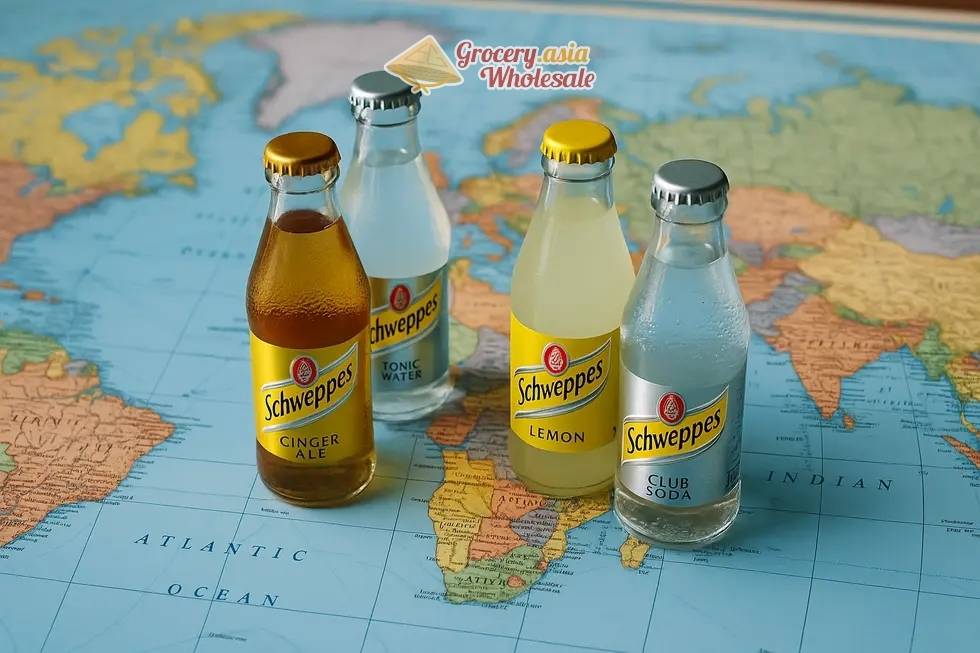No products in the cart.
Beverages News, Schweppes, Soft Drinks
Mastering Schweppes Label Export: Strategies for Success
Schweppes has established itself as a leader in the global beverage market, not just through the quality of its drinks but also by mastering the art of export labeling. For wholesale importers, understanding Schweppes’ approach is crucial to effectively navigate the complexities of the international market. This article delves into five key areas: the strategies behind custom label designs, innovative packaging methods that ensure product freshness, nuanced pricing strategies, the importance of regulatory compliance, and the logistical hurdles faced in global distribution. Each chapter unpacks these components, providing a comprehensive view of Schweppes’ export operations.
Table of Contents
Crafting Cultural Connections: Techniques in Schweppes Label Customization
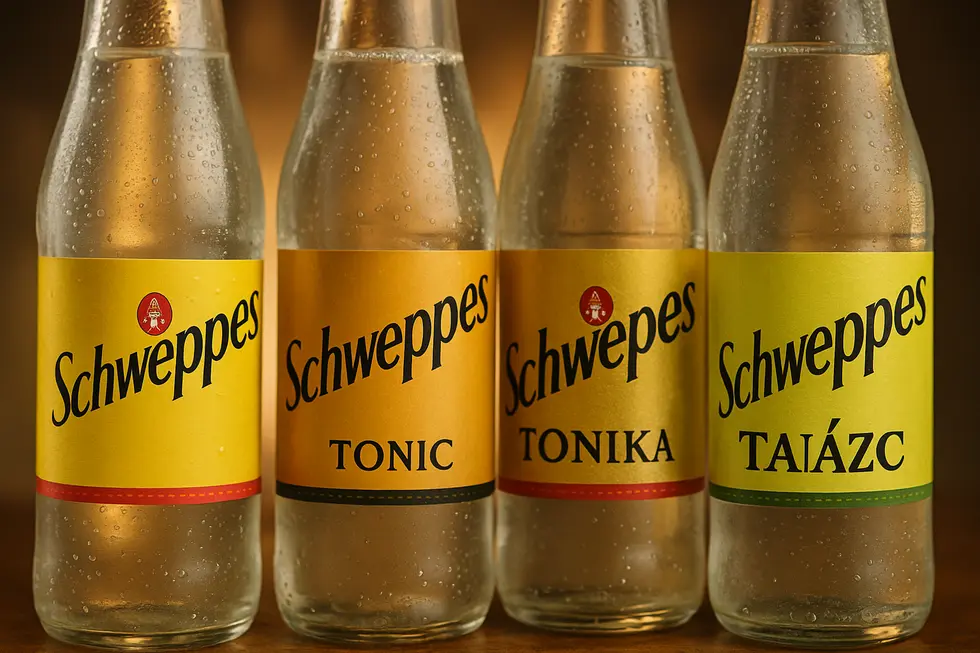
In the intricate dance of global commerce, Schweppes employs strategic label customization to resonate with diverse cultural markets. A cornerstone of this global strategy is the use of premium, eco-friendly packaging materials. This approach not only emphasizes sustainability but also aligns with consumer expectations for quality, helping Schweppes appeal to environmentally-conscious global customers.
Labelling as a storytelling medium is another pivotal technique used to craft cultural connections. By highlighting provenance and unique ingredients, the labels engage consumers on a personal level, weaving a narrative of authenticity and heritage. This storytelling not only differentiates Schweppes in competitive markets but also fosters a deeper connection with consumers.
Moreover, label customization extends to language translations and adherence to local regulations, ensuring compliance and cultural relevance. Incorporating region-specific design elements further personalizes products for local markets, enhancing the brand’s appeal and fostering consumer loyalty.
Quality assurance markings, including batch numbers and QR codes, add another layer of reliability and engagement. Such features not only assure consumers of product authenticity but also facilitate interactive marketing strategies, enhancing customer experience and brand loyalty. These comprehensive strategies illustrate the meticulous attention Schweppes pays to label customization, ensuring that each market not only receives a product but a piece of the brand’s enduring story.
Innovative Packaging: Ensuring Freshness in Schweppes Global Shore
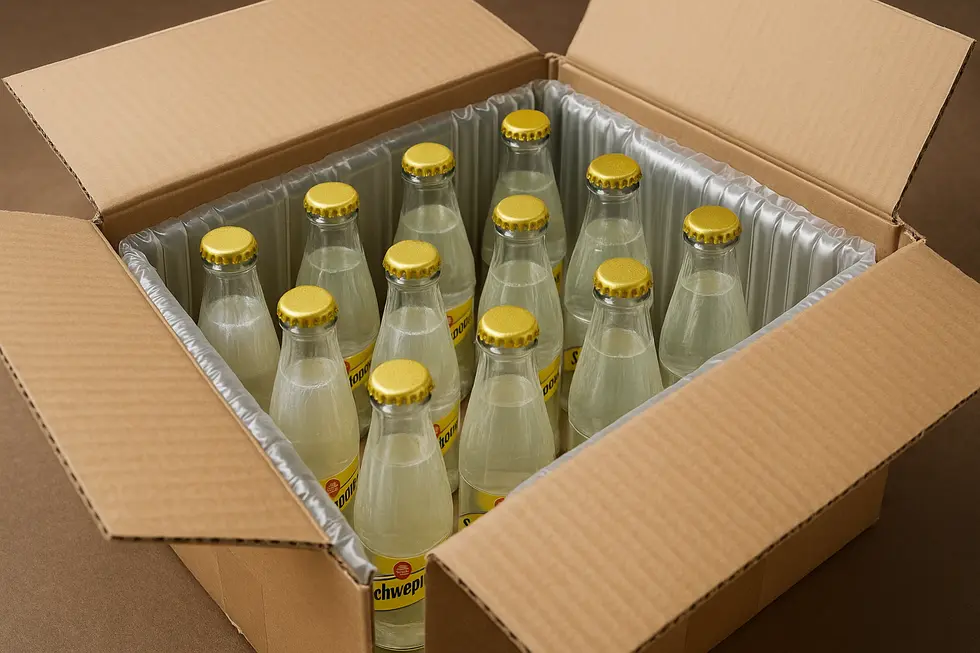
Schweppes has long been a pioneer in integrating cutting-edge packaging solutions, ensuring that their iconic beverages arrive in distant markets with the same freshness as when they left the production line. The quest to maintain product quality across continents introduces a careful selection between PET bottles and glass. The choice deeply impacts not only the durability and cost-effectiveness of transport but also the preservation of carbonation and flavor integrity over long distances.
Investment in Research & Development is at the forefront of Schweppes’ strategy, with ongoing efforts to refine their packaging for optimal production efficiency and reduced material usage. Their approach includes exploring alternative materials that promise better preservation during transit, aligning with contemporary concerns about sustainability and consumer health. One significant focus is the redesign of closures to avoid microplastic contamination while maintaining a stable shelf life.
Sustainability trends shape Schweppes’ packaging strategies, reflecting a global shift towards recyclable materials. This conscious decision resonates with environmentally conscious consumers in various regions. By innovating at the intersection of technology and ecology, Schweppes remains committed to delivering beverages that meet safety standards and market demand, even across oceans. For a deeper dive into how these efforts impact logistics and pricing, explore Schweppes’ wholesale pricing guide.
Global Pricing Strategies: Navigating Regional Variations for Schweppes Exports
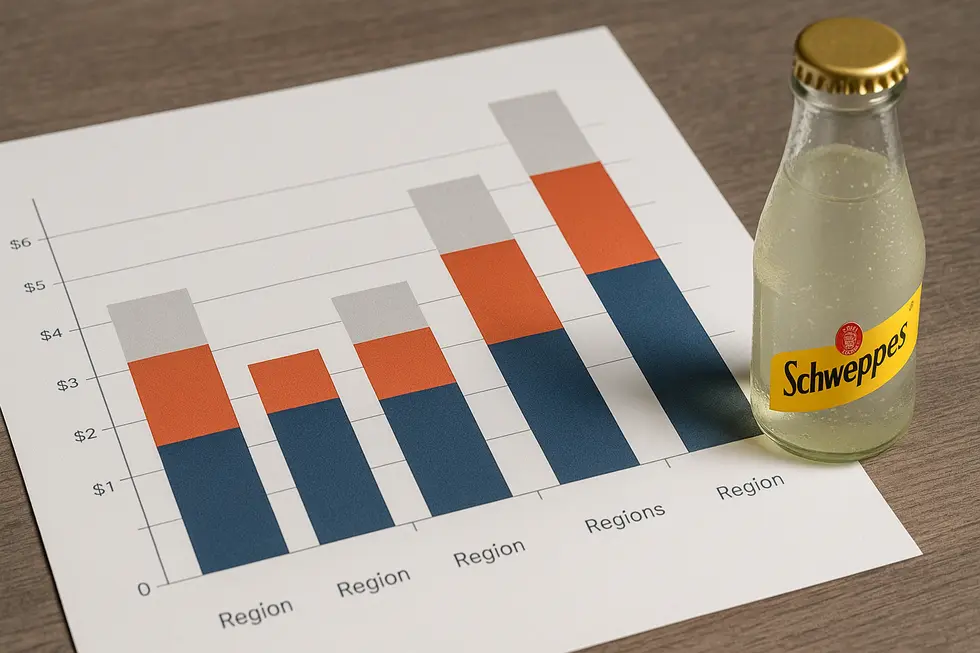
The global export of Schweppes involves strategically designed pricing mechanisms to ensure market penetration and profitability across diverse regions. Regional pricing variations are a key consideration, as logistics and distribution costs fluctuate significantly based on each area’s infrastructure. Shipping to remote regions inevitably raises transport expenses, leading to increased retail prices for consumers in those markets.
Local taxes and tariffs further complicate the pricing landscape. Different countries impose varying import duties and excise taxes, directly influencing the ultimate cost of Schweppes products abroad. Higher fiscal burdens translate into higher prices on export labels, impacting consumers and distributors alike.
Market dynamics and competitive pressures also play pivotal roles. In price-sensitive areas, Schweppes may opt for reduced prices or offer bulk purchase discounts, leveraging economies of scale. Conversely, in less competitive yet high-demand regions, Schweppes maintains a premium pricing structure, supported by Coca-Cola’s expertise in consumer segmentation and premiumization trends.
Custom packaging tailored to local preferences, such as unique flavors or formats like returnable glass bottles, also affects pricing structures by aligning with both consumer tastes and operational costs. Such variations necessitate careful cost management to optimize profitability.
For further insights on strategies for navigating these complexities, see Schweppes Supplier in Asia. By understanding these dynamics, exporters can craft effective strategies that balance market penetration with profitability.
Navigating Regulatory Waters: Compliance and Certification in Schweppes Exports
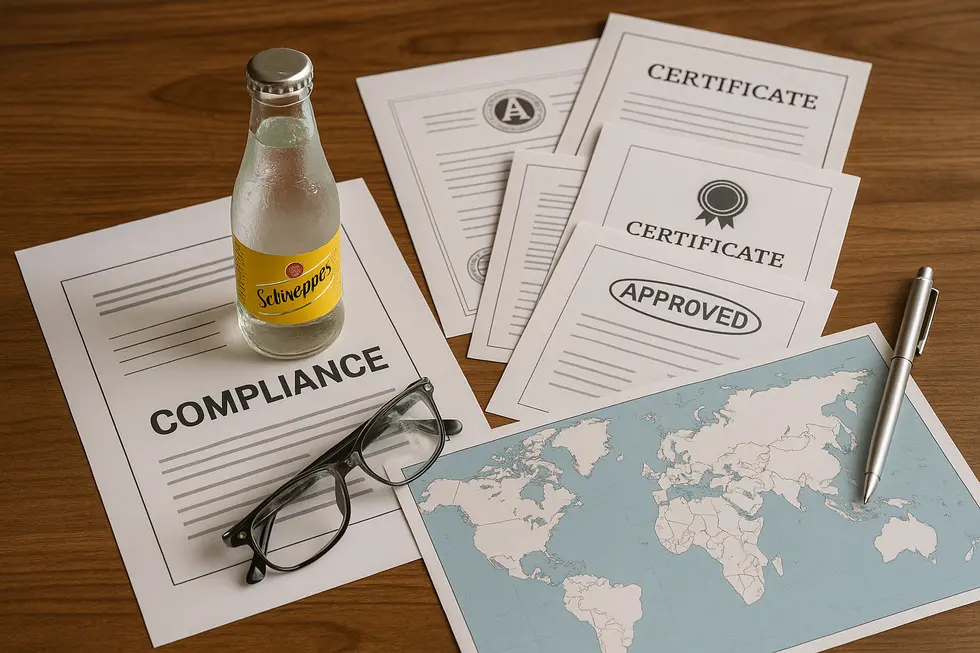
Exporting Schweppes products to various global markets demands unwavering adherence to regulatory compliance and certification standards. As a global beverage brand, Schweppes must meticulously tailor its label export strategy to align with the multifaceted regulatory mandates of different countries. Every product label must distinctly present ingredient lists, nutritional information, and expiration dates, alongside mandatory quality certifications. This precision in labeling is indispensable for facilitating efficient customs processes and safeguarding consumer trust.
The history of related entities like Cadbury-Schweppes underscores the gravity of stringent compliance. A past Salmonella outbreak from insufficient hygiene controls at Cadbury-Schweppes serves as a cautionary tale, resulting in recall actions and driving the implementation of rigorous quality controls within Schweppes. In a globalized supply chain, ensuring product safety is paramount—not only through labelling but also by adhering to technical and food safety standards. Advanced packaging technologies play a pivotal role here, extending product shelf life by maintaining freshness during transit.
Moreover, products must align with specific technical regulations of importing nations, which may relate to auxiliary equipment like vending machines. By learning from industry precedents and applying stringent internal guidelines, Schweppes maintains its commitment to regulatory excellence, ensuring smooth export operations and continued brand recognition. For further insights on aligning export strategies with regulatory standards, this guide provides useful information.
Navigating Global Logistics: The Schweppes Label Export Challenge
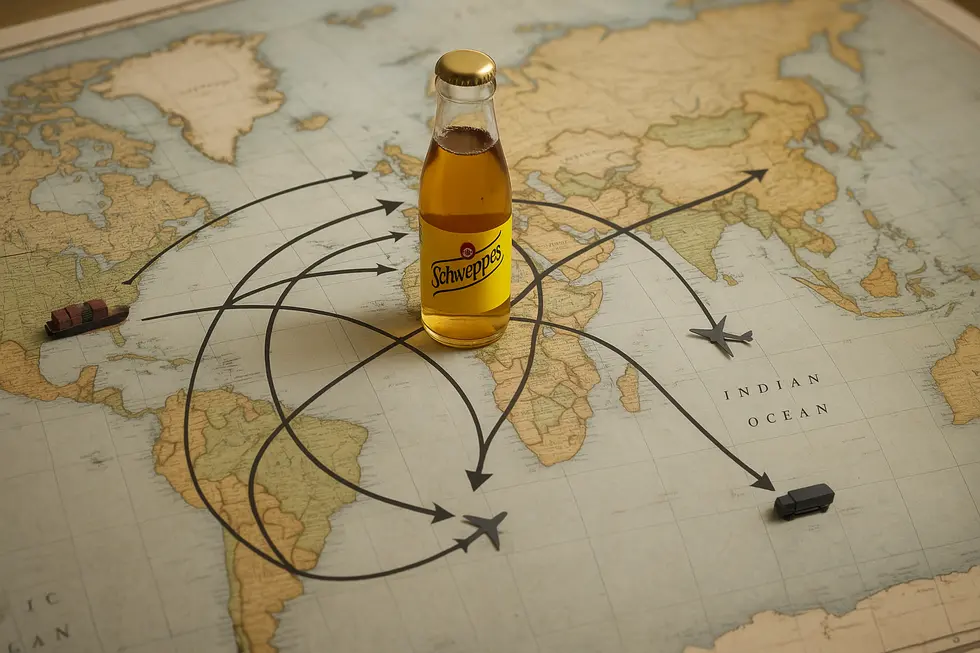
The logistics behind exporting Schweppes labels globally are complex, with supply chain intricacies, regulatory compliance, and cost management at their core. Schweppes has formed strategic alliances, such as with Coca-Cola Europacific Partners, to efficiently manage its distribution across key regions like Great Britain and Egypt. These partnerships help mitigate economic shifts and ensure a steady supply chain amid diverse market conditions. However, maintaining product quality and managing transportation modes, storage, and inventory continue to be significant challenges.
Compliance with international packaging and labeling standards is crucial to avoid delays in customs and potential rejections. Schweppes products must adhere to ingredient safety regulations and tariff classifications that differ significantly across borders. For example, regions like Zimbabwe have imposed sugar taxes, elevating costs for Schweppes Zimbabwe and exemplifying the financial burden of diverse regulatory environments.
Transportation costs also heavily influence Schweppes’ pricing structures, driven by infrastructure variability. Inaccessible areas incur higher freight charges, which, coupled with local taxes, elevate product prices and affect their market competitiveness. Additionally, meeting diverse consumer packaging preferences adds logistical and financial burdens.
Schweppes responds by leveraging bottling alliances and adapting logistics to suit regional conditions, a strategy detailed in their global trade strategy.
Final thoughts
In summary, Schweppes’ strategic mastery of its export label operations sets a benchmark in the global beverage industry. By tailoring labels to meet local demands, innovating in packaging, carefully calibrating pricing, ensuring regulatory compliance, and overcoming logistical hurdles, Schweppes provides a blueprint for wholesale importers aiming to succeed in diverse markets. Understanding these components can significantly enhance the ability to manage complex international supply chains effectively.
👉 Need help with Schweppes label compliance for export? We’re here to assist with documentation and B2B supply.
About us
Asia Grocery Co., Ltd is a trusted distributor, wholesaler, and exporter of fast-moving consumer goods (FMCG) from Vietnam, backed by over 20 years of expertise. We deliver authentic products from globally recognized brands such as P&G, Unilever, Redbull, Coca-Cola, Pepsi, Asiadeli, along with traditional and culturally significant Asian products, catering to customers worldwide with a special focus on Vietnamese and Asian communities abroad.

